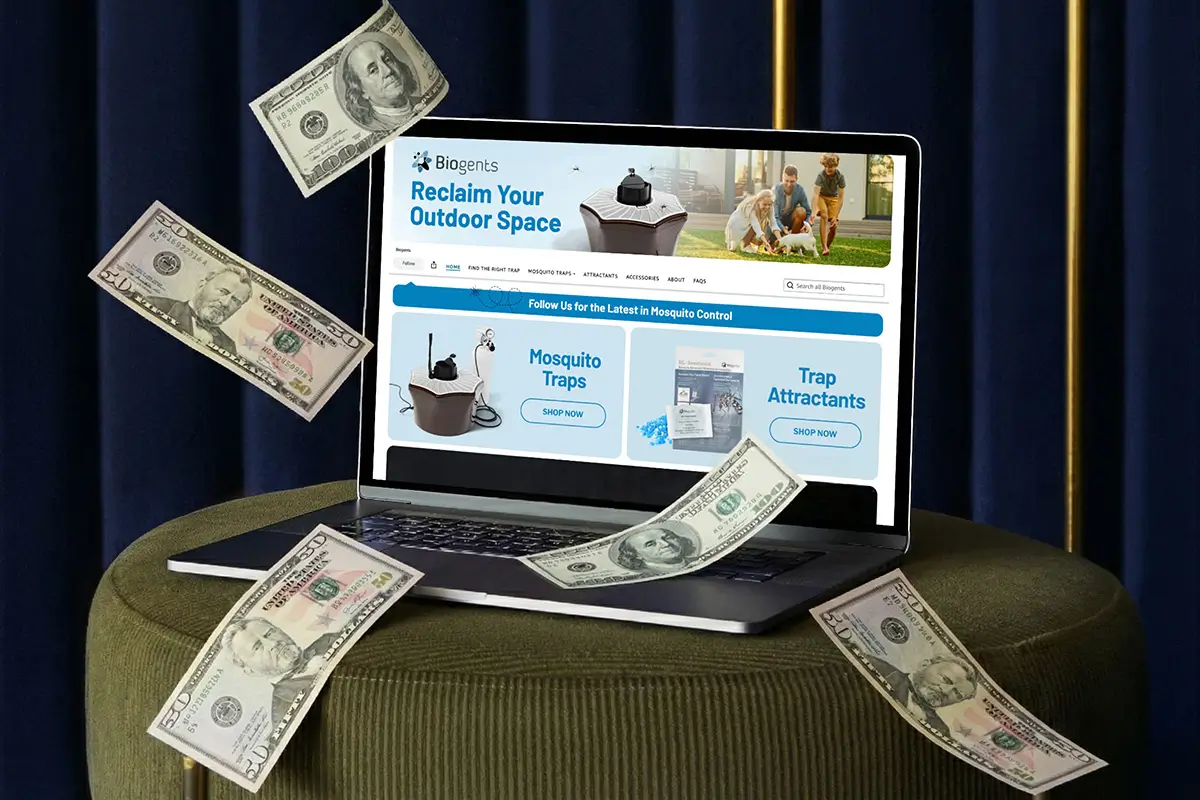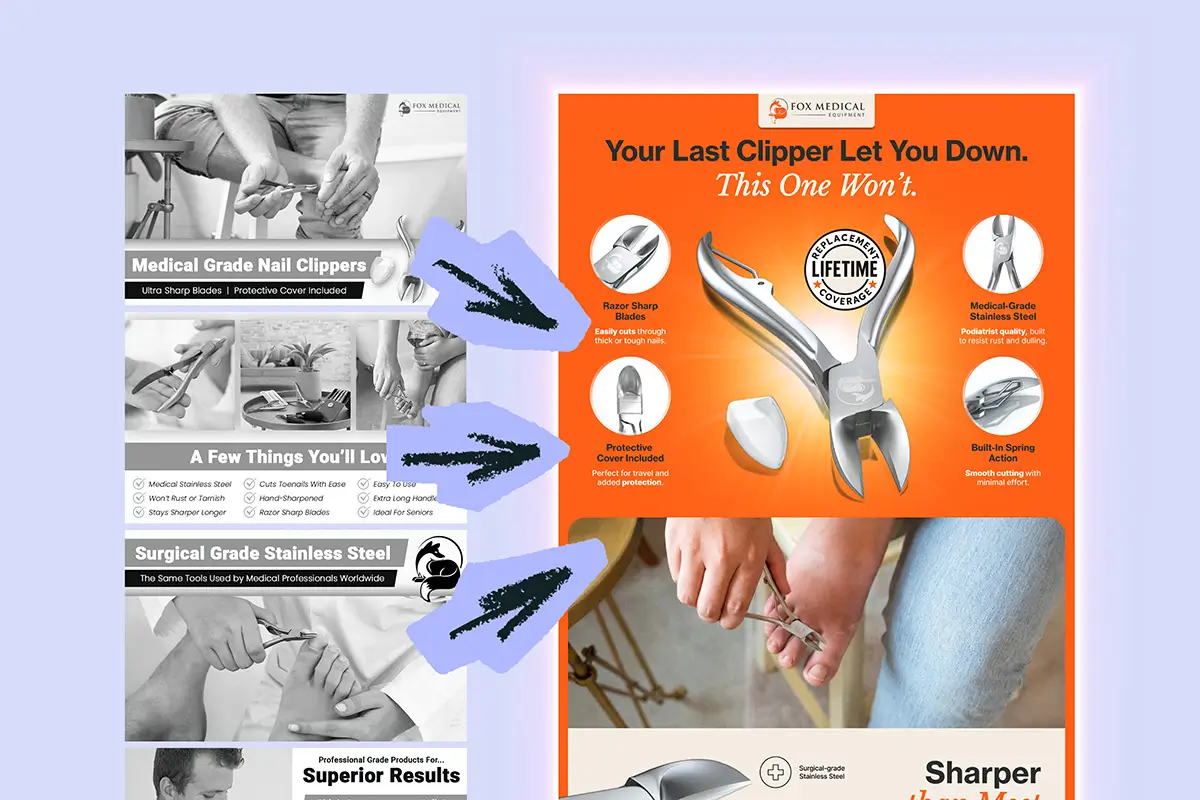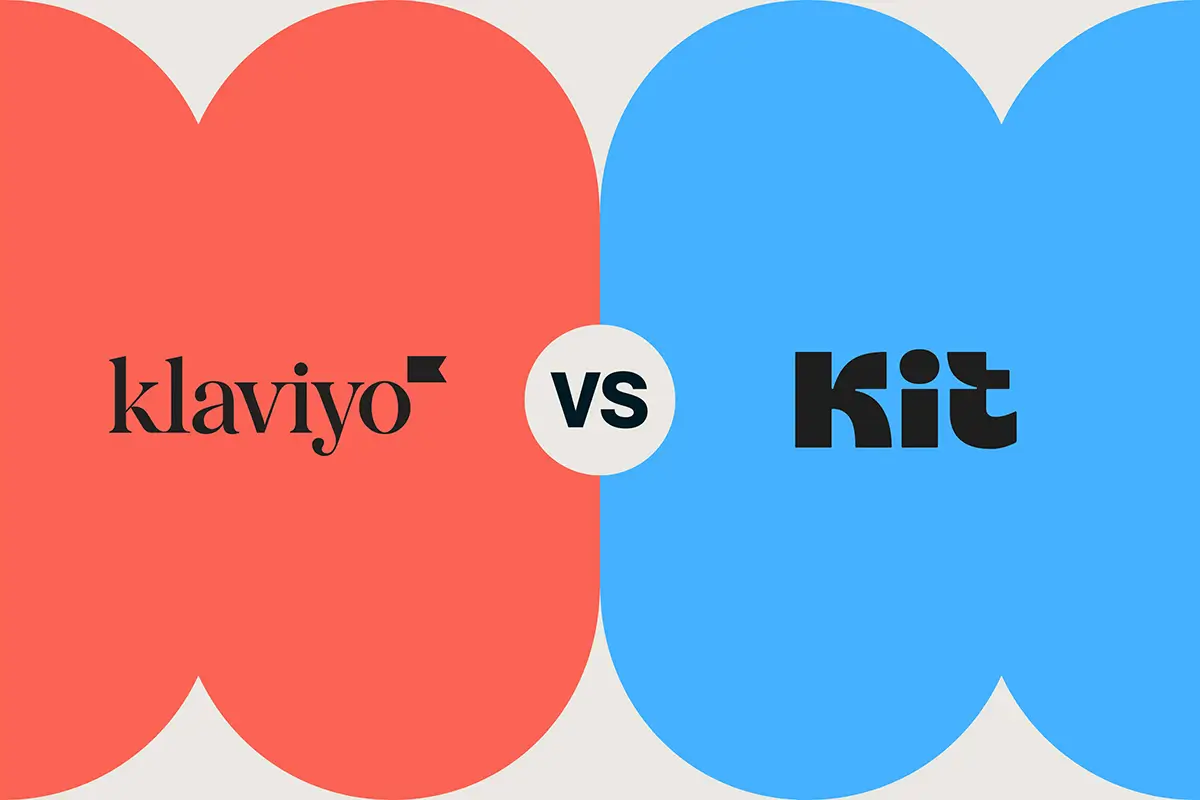Marketing is one never-ending decision-making process. Some choices remain consistent— branding elements, marketing platforms, target audience. Others— like how you connect with your target audience— change from day-to-day.
When it comes to emailing your subscribers, one of the first decisions you’ll have to make is whether to use text-based or image-based emails. As a graphic designer, I obviously believe there’s a lot of merit in communicating your message through imagery. But it’s also important to realize you shouldn’t adapt a one-size-fits-all approach to your emails.
This article will talk you through what each format is, what it has to offer, and how to decide which one is best for you.
Live Text Emails

Live text is copy contained in the email's HTML code, and the moment your email arrives in someone's inbox - boom! The text inside is available to read without delay. Basically, it is text that is not embedded in an image but rather coded into the actual email itself.
Now, word on the email streets is that having a mixture of live text and images in an email is 'best' practice, so I will preface this by saying that live text will have more pros than cons, but let’s walk through some of them together.
1. They load quicker
With fewer images to upload, live text emails load quickly. Let’s be honest— people are impatient. If the images in an email aren’t showing up almost instantly, readers may quickly lose interest and move on to the next message in their inbox. With a more live text-based email, the important messaging of your email still comes across even if images are delayed or don't load at all.
Challenge: You hand over some control to your email service provider and the online gods.
Ever design a beautiful message on your email platform only to be horrified at how it shows up in your inbox? It’s an unfortunate– and almost unavoidable– part of email marketing. Colors show up differently on various devices. Email providers may not offer the font you’ve chosen for your brand. And sometimes the internet has a mind of its own. And don't get me started on Outlook and dark mode.
2. They work better for large chunks of information
If you have a lot of information to convey in a single email, live text is the way to go. Why? Because you'll want your email copy to be responsive and easily readable on mobile devices. In fact, Hubspot found that 41% of email opens happen on mobile while only 39% viewed on desktop.
Challenge: You lose the interest of your visually-focused subscribers.
The learning styles they talk about in school don’t fade with age. People prefer to gain information in different ways. When they’re stuck on the side of the road with a flat tire, Bob may read how to change it in the car’s instruction manual while Rob learns from following a YouTube video.
The point is some people appreciate text more, while others appreciate imagery. Visual learners may not take the time to read all of the text in an email, so you’ll lose their attention without enough images.
Live text emails can sometimes limit the creativity of a design which can come across as having a template-like look and feel.
3. Easier to make changes yourself
I get many design requests to create custom templates that make it easier for brands to make edits themselves. Creating a modular-style template has become increasingly popular for those on a tighter budget. It utilizes best email practices while giving those who don't have a full-time developer or designer a no-code way to make and send emails.
Challenge: Adds more weight to the email code.

It might be tempting, especially when you're new to your provider's template builder, to drag and drop every single type of block from tables to columns to adding buttons— it's like being a kid in a candy store.
But be cautious; it may look good on many devices, but Gmail, a widely used email client, is known for clipping its HTML-heavy emails. Of course, it isn't 100% consistent when Gmail decides to clip your email, so make sure to test first.
4. Copy is easier to read in dark mode
We're all a culprit of this at some point, perusing our phone late at night while we should be sleeping. Because of this, many phones automatically switch your settings to dark mode, which shifts the background of font and colors to light on dark. When you have live text in your emails, it utilizes this setting, making the content you're viewing easier on the eyes.
Challenge: Designing for dark mode is more challenging.
Ahh, you've just found the perfect color to place your email copy on, only to realize it looks completely different in dark mode. Yup, with the introduction of dark mode to emails, besides being the bane of my existence, has become increasingly difficult to get an email to look pretty when the lights are turned off— another reason why some brands opt for image-only emails.
5. Personalization that connects with your customer
Personalizing images for marketing campaigns is technically possible, but it isn't something that can be done in a snap. Fortunately, utilizing merge tags to personalize email messages– while not revolutionary– may bring those open and click-through rates skyrocketing!
You can make your email campaigns truly special by utilizing the information from your subscriber list! With just a few clicks, you can easily customize emails to include each person's name, company, or even t-shirt size.
6. Potential for higher click-through rates
Constant Contact analyzed over 2.1 million of their emails and found that emails with three or fewer visuals plus 20 lines of text were the most successful when trying to engage subscribers and get that higher click-through rate.
Crafting the perfect email doesn't have to be so convoluted— keep them straightforward, and you'll easily reach any reader.
Of course, many variables come into play, like the industry and your brand, so it depends on your email subscriber base.
Live text emails are best for you if you’re:
- on a tighter budget
- access to a graphic designer is limited
- focused on strengthening the relationship with your readers
- sharing a large chunk of information that needs text to convey properly
- telling a story
Image-Only Emails

Image-only emails consist of— you guessed it— images. An image-only email doesn’t mean there’s no text in the email, just that text is embedded into the image itself. When these are created following best practices, all of the elements are encompassed in a single file that’s sliced into multiple images to create different links.
A quick Google search will reveal that there’s a lot of controversy surrounding sending image-only emails. Let’s talk about some of the advantages and challenges you’ll experience with this type of email.
1. Readers respond far more quickly to images and visuals
They say a picture is worth a thousand words.
Image-based emails are more generally more visually appealing than those with more live text because you can do a lot more creatively. There’s a reason people flock to Instagram rather than Facebook these days— they love to look at pretty things. In addition, images like pictures, infographics, and charts can more effectively get your message across than a lengthy chunk of text.
Challenge: Some email providers block images or don’t scale them appropriately.

This doesn’t mean you’re stuck skipping out on images. You can often prevent the first this issue by resizing your emails to the appropriate size before sending them.
To further avoid the risk of an empty email, use alt text to describe the offer being presented in your image. Even if the picture doesn’t load, readers will still know exactly what you’re communicating. In addition, alt text makes your emails more accessible to visually impaired readers and those using a translator app.
There’s also the chance of scaling issues on mobile screens. Just because an image looks great on your computer screen doesn’t mean it’ll present as well on your readers’ phones. The best workaround for this is creating different images for each type of device or make sure your images look legible on desktop and mobile.
2. You have far more creative control
You’re not restricted to the templates, blocks, or even fonts that your email platform provides for you to use. Want copy over a background image? A button with a bold drop shadow? A quote within a box with an overlapping image on a 120º angle? Even the slightest detail is possible when your email is image-based.
In addition, you don’t have to worry about how formatting will change on different devices. Just make sure it’s all sized appropriately so it will load and open quickly on both phones and desktops.
Challenge: You’ll need to put in a little extra effort— or get some outside help.
You’re going to have to roll your sleeves up and get your hands a little design dirty. And if you want beautiful images that are responsive and accessible, you’re probably going to need support from an expert (I’ve already got the perfect person in mind). Although the investment of time or money may initially sting, you have to weigh it against the potential for increased sales and engagement!
3. Consistent branding
What you see is what you get— across all email providers! If your business has a larger focus on consistent styling across all media platforms, then having an image-only email is likely in your foreseeable future. Remember, custom fonts on many email providers will default to a web-safe font (think Arial), and those brand colors you have won't look the same on dark mode if you go the live text route.
Challenge: Not really accessible.
Nowadays, accessibility is king. When creating an email for your subscribers, it's important to consider their needs. Visually impaired readers might use a screen reader or adjust the DPI of their device— but if all the content is locked in images, they may not receive everything you have to offer!
Similarly, multilingual users won't be able to translate text on images either. Don't forget about those using voice assistants either; even though these devices can read out alt tags and HTML attributes, when it comes down to image-only emails, this feature, unfortunately, doesn't work as intended.
4. More CTA (Call-to-Action) Space
Having an all-image email gives you the opportunity to not just make the button area clickable but the entire image itself so that the email essentially functions as a giant CTA, so regardless of where you click, it takes them to your site.
Challenge: Important CTAs go missing if images do not load.
As I mentioned before, sometimes images load slowly or don't load at all. To ensure CTAs remain effective, they should be coded or drag and dropped into the email itself; this way, you won't run into any issues even if the CTA visually resides within an image.
Image-only emails are best for you if:
- consistent branding across all email providers is a must
- you have a designer available to create engaging content
- each email has to be custom and creative
- you have more visuals and less copy (i.e., sales, giveaways, showcasing a product)
The Bottom Line
Once upon a time, image-filled emails were blocked by spam filters because pesky spammers would display information in large images instead of text so that filter programs could not “read” the content. But now, with superior, intelligent spam filters, images in emails can be delivered reliably.
In this day and age, images appear by default in many email platforms; in 2013, Gmail announced that images would display by default on desktop, iOS, and Android.
Now, if only they would make a few other 'why can't you make an email designer's life easier' updates— but I digress.
Final verdict? You’re never married to only sending live text or image-only emails. Instead, consider the purpose of each email on a case-by-case basis and decide which format best meets your needs.








